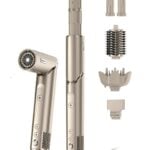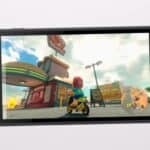AI has reached the point where you can turn a single still image into a fully animated, cinematic video — and the results are astonishing. Whether you’re a creator, filmmaker, or marketer, AI image-to-video models can bring static visuals to life with realistic motion, lighting, and storytelling.
In this guide, we’ll explore the best image-to-video AI models of 2026, compare their strengths, and help you choose the right one for your creative needs.
🔍 What Is an Image-to-Video Model?
An image-to-video model uses advanced AI (usually diffusion or transformer-based) to generate a moving video sequence from a single image or frame. These models analyze depth, texture, and context to simulate realistic motion — such as a person turning their head, waves moving, or a camera panning around a subject.
🏆 Top Image-to-Video AI Models (2026)
Based on recent testing and comparisons from sources like Let’s Enhance, ClipCat, and Tom’s Guide, here are the leading image-to-video models available today:
1. Google Veo 3
Best for: Cinematic realism and depth
Highlights:
- Generates 1080p–4K video with natural camera motion.
- Excels at lighting consistency and human motion realism.
- Integrates seamlessly with Google’s DeepMind video diffusion pipeline.
Pros:
✅ Unmatched realism
✅ Great for film and advertising
Cons:
❌ Limited public access (invite-only as of late 2026)
2. Runway Gen-3 Alpha
Best for: Creative control and professional workflows
Highlights:
- Offers keyframe-based motion editing.
- Supports both image-to-video and text-to-video generation.
- Integrates with Adobe Premiere and After Effects.
Pros:
✅ Fast rendering
✅ Great for creators and editors
Cons:
❌ Subscription required
❌ Motion can appear stylized at times
3. Pika 1.5
Best for: Fast, social-media-ready animations
Highlights:
- Converts images into short 4–8 second videos.
- Offers prompt-based motion control (e.g., “pan left,” “zoom in”).
- Built-in community for sharing and remixing results.
Pros:
✅ User-friendly
✅ Free tier available
Cons:
❌ Limited resolution
❌ Not ideal for long-form content
4. Luma Dream Machine
Best for: Realistic depth and camera movement
Highlights:
- Uses 3D scene reconstruction to simulate camera motion.
- Great for turning portraits or landscapes into dynamic shots.
- Produces smooth, cinematic parallax effects.
Pros:
✅ Realistic motion
✅ Works well for photography and art
Cons:
❌ Slower rendering
❌ Limited motion customization
5. Hailuo AI
Best for: Artistic and stylized animations
Highlights:
- Focuses on aesthetic motion and painterly effects.
- Offers multiple style presets (anime, watercolor, oil painting).
- Popular among digital artists and illustrators.
Pros:
✅ Unique art styles
✅ Easy to use
Cons:
❌ Not photorealistic
❌ Shorter video lengths
6. Kling AI
Best for: Realistic character motion
Highlights:
- Developed by Kuaishou, known for hyper-realistic human animation.
- Handles facial expressions, eye movement, and lip sync with precision.
- Perfect for virtual influencers or realistic avatars.
Pros:
✅ Excellent human motion
✅ Supports dialogue and expressions
Cons:
❌ Region-locked (China-focused)
❌ Requires high-end GPU for local use
7. WAN 2.1
Best for: Open-source experimentation
Highlights:
- Community-driven model with customizable motion parameters.
- Works locally or via cloud inference.
- Strong support for depth maps and optical flow control.
Pros:
✅ Free and open-source
✅ Highly customizable
Cons:
❌ Requires technical setup
❌ Less polished results than commercial models
⚙️ Comparison Table
| Model | Best For | Realism | Control | Access | Price |
|---|---|---|---|---|---|
| Google Veo 3 | Cinematic realism | ⭐⭐⭐⭐⭐ | ⭐⭐⭐⭐ | Limited | Invite-only |
| Runway Gen-3 | Professional editing | ⭐⭐⭐⭐ | ⭐⭐⭐⭐⭐ | Public | Paid |
| Pika 1.5 | Quick social clips | ⭐⭐⭐ | ⭐⭐⭐ | Public | Free/Paid |
| Luma Dream Machine | 3D motion realism | ⭐⭐⭐⭐ | ⭐⭐⭐ | Public | Free |
| Hailuo AI | Artistic animation | ⭐⭐ | ⭐⭐ | Public | Free |
| Kling AI | Human realism | ⭐⭐⭐⭐⭐ | ⭐⭐⭐ | Limited | Free |
| WAN 2.1 | Open-source tinkering | ⭐⭐⭐ | ⭐⭐⭐⭐ | Open | Free |
🧠 How to Choose the Right Model
When picking an image-to-video generator, consider:
- 🎨 Purpose: Artistic vs. realistic output
- ⚡ Speed: Do you need instant results or cinematic quality?
- 💰 Budget: Free tools are great for testing; paid ones offer pro features
- 🧩 Integration: If you work with editing software, choose models like Runway or Luma
🚀 Honorable Mentions
- Vidu AI: Fast and lightweight, great for quick previews.
- LTXV: Experimental model with impressive frame interpolation.
- Sora (OpenAI): Still in limited release, but shows groundbreaking potential for full-scene generation.
🏁 Final Thoughts
The best image-to-video model depends on your goals:
- For cinematic realism, go with Google Veo 3 or Luma Dream Machine.
- For creator flexibility, Runway Gen-3 is unbeatable.
- For fun and fast results, Pika 1.5 and Hailuo AI are perfect choices.
As AI video generation evolves, these models are bridging the gap between photography and filmmaking — making visual storytelling more accessible than ever.
In summary:
2026 is the year AI transforms static images into living, breathing motion. Whether you’re an artist, filmmaker, or casual creator, the tools above can help you turn imagination into moving art.







